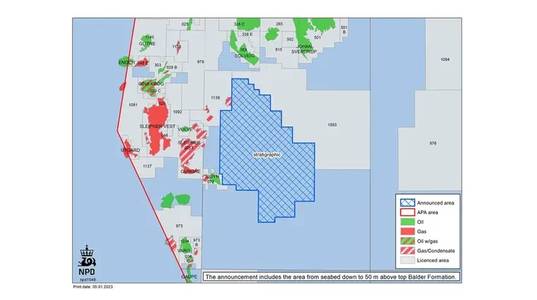
The Norwegian oil and gas company Sval, with its partners Storegga and Neptune, has applied for a CO2 storage license in the Norwegian North Sea. The project, called Trudvang, has the potential to store up to 225 million tons of CO2.
Truls Olsen-Skåre, Senior Vice President Sustainability & HSEQ in Sval Energi, said: “Carbon capture and storage (CCS) is a solution that can significantly reduce CO2 emissions. The Trudvang partners have worked jointly since December 2021 to identify, nominate, and apply for this license. We have undertaken a substantial amount of work already, including subsurface evaluation of the storage complex, and technical and economic assessment of the CCS value chain. This work has shown that Trudvang can be matured into a commercially viable project with safe and efficient carbon storage.”
According to Sval, it would be possible to inject about nine million tonnes of CO2 per year in Trudvang for 25 to 30 years.
Olsen-Skåre said: “In Europe, approximately 300 million tonnes of hard to abate CO2 is emitted each year. The Trudvang project has the potential to capture and permanently store these emissions on a on a large scale.”
The Trudvang storage license is located in the Norwegian North Sea, to the east of the Sleipner field and about 165 kilometers from the coast. The storage reservoir is in the Utsira formation.
According to Olsen-Skåre said the project could start injecting CO2 in 2029.
The Trudvang project envisages the capture of CO2 by multiple industrial emitters in Northern Europe and the UK, the shipping of liquid CO2 from export terminals to an onshore receiving terminal in the south-west of Norway and then transport via a purpose-built pipeline to the Trudvang location for injection and permanent storage. Sval is the proposed operator of Trudvang with a 40% ownership. Storegga and Neptune each has a 30% ownership.